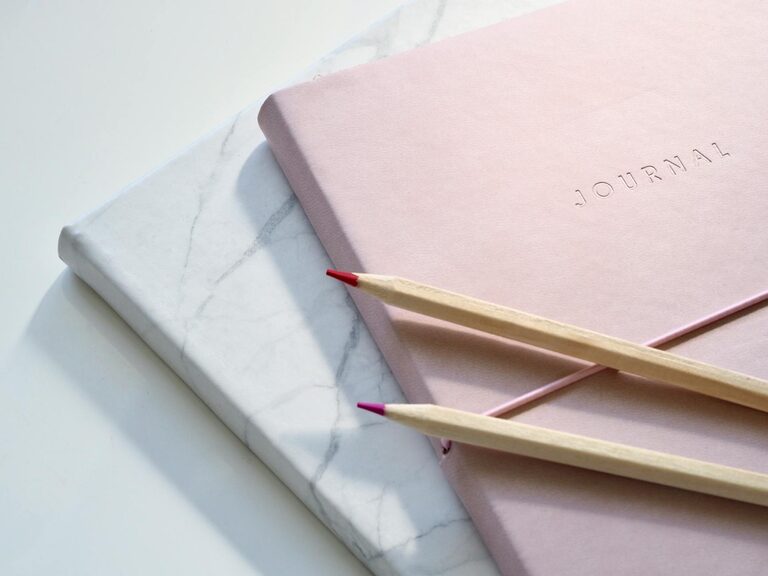Choosing the right notebook might seem like a simple task, but if you’ve ever bought one and never used it, you know it can be more complicated than expected. With so many options available—from size and paper type to binding style and cover design—finding a notebook that fits your lifestyle and encourages you to jot down your thoughts can be a challenge.
This guide will help you understand what to look for in a notebook so you pick one you’ll genuinely use and enjoy.
Why Choosing the Right Notebook Matters
A notebook is more than just paper bound together. It can be a tool for creativity, organization, productivity, and reflection. When you choose a notebook that meets your needs, you’re more likely to write regularly, stay organized, and capture ideas as they come.
On the other hand, a poorly chosen notebook ends up collecting dust or crumpled pages. Understanding your habits and preferences plays a big role in making the right choice.
Determine Your Purpose
Before shopping, think about how you plan to use your notebook. Is it for:
– Daily journaling or reflection?
– Taking notes in meetings or classes?
– Creative writing or sketching?
– Planning and to-do lists?
– Brainstorming ideas or mind mapping?
Knowing your purpose helps you decide key features like size, paper type, and layout.
Consider the Size and Portability
Notebooks come in various sizes, from tiny pocket journals to large sketchbooks.
– Pocket-sized (A6 or smaller): Easy to carry everywhere but limited writing space. Ideal for quick notes or on-the-go ideas.
– Medium-sized (A5): Popular choice balancing portability and enough space for notes or journaling.
– Large (A4 and above): Great for detailed work, planning, or art but less portable.
Ask yourself if you want to carry your notebook daily in a bag or keep it mainly on a desk.
Think About the Paper Quality and Type
The feel and durability of paper can make a big difference:
– Paper Thickness (GSM): Higher GSM (grams per square meter) means thicker paper which resists ink bleed-through better. For pen-heavy users or markers, a higher GSM (80-120) is preferable.
– Paper Color: White is standard and bright but can cause more glare. Cream or off-white paper is softer on the eyes.
– Ruled, Grid, or Blank: Choose ruled for writing, grid for precision or bullet journaling, and blank for sketching or freeform notes.
If you plan to use fountain pens, gel pens, or markers, check reviews or test the paper to avoid feathering and bleeding.
Binding Style and Durability
Binding affects how the notebook opens and its durability.
– Spiral binding: Allows the notebook to lie flat or fold back completely, useful for note-taking.
– Perfect binding (glued spine): Often looks neater but may not open flat easily.
– Sewn binding: More durable and allows the notebook to open flat but tends to be pricier.
– Disc-bound: Modular and flexible—pages can be added or removed easily.
Consider how you usually write—do you need the notebook to lay flat or be compact?
Cover Material and Design
The notebook cover protects the pages and reflects your style. Common materials include:
– Hardcover: Offers solid protection and a premium feel.
– Softcover: More flexible and lightweight but less protective.
– Leather or faux leather: Durable and classic but more expensive.
– Cardstock or cardboard: Affordable and often eco-friendly.
If you carry your notebook around, a sturdier cover can prevent damage. Many notebooks also offer elastic bands or pockets for added functionality.
Features That Add Value
Some notebooks come with extras that might suit your lifestyle:
– Page numbers and index: Helpful for organizing notes.
– Perforated pages: Easy to tear out without damaging the notebook.
– Built-in bookmarks or ribbons: Keep your place quickly.
– Expandable pockets: Store loose papers, business cards, or stickers.
– Pre-designed layouts: Bullet journal, planner, or gratitude journal formats can guide your writing.
Think about which features will genuinely enhance your experience.
Budget Considerations
Notebooks come in a wide price range. While it’s tempting to buy the cheapest option, investing a little more in quality can increase your likelihood of consistent use.
Consider buying one high-quality notebook rather than multiple cheap ones that don’t last or inspire you.
Tips for Making Your Notebook a Habit
Choosing the right notebook is just the first step. Here are ways to ensure you actually use it:
– Keep it visible: Place your notebook where you usually spend time.
– Set small writing goals: Commit to a sentence per day rather than pages.
– Personalize it: Decorate the cover or create a welcoming first page.
– Use it flexibly: Don’t worry about perfection or strict rules.
– Pair it with your favorite pen: The right pen can motivate you to write.
Try Before You Buy
If possible, visit a stationery store to feel different notebooks in hand, test writing on samples, and see what fits your grip and writing style.
Final Thoughts
Choosing a notebook you’ll actually use depends on matching your needs, preferences, and lifestyle. Think through the purpose, size, paper quality, binding, and features before making a decision. When your notebook feels right, it becomes a companion for your ideas and daily thoughts instead of a forgotten purchase.
Happy writing!

